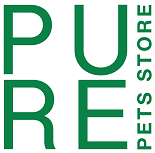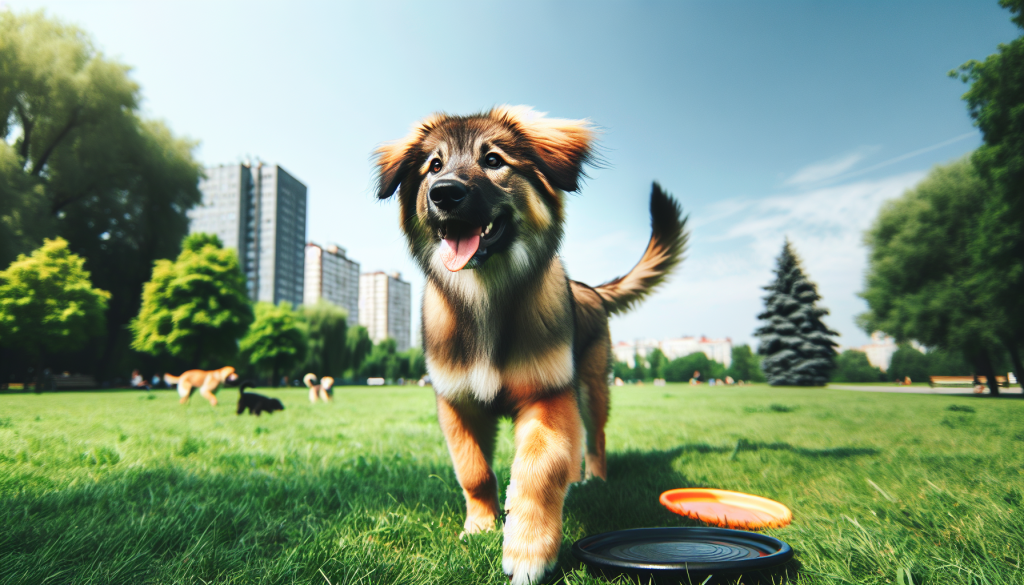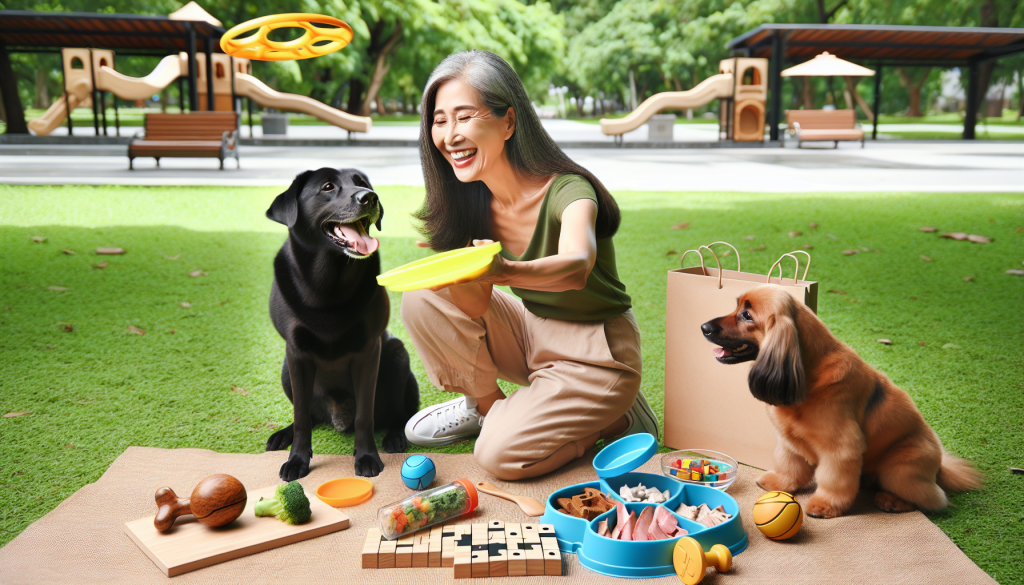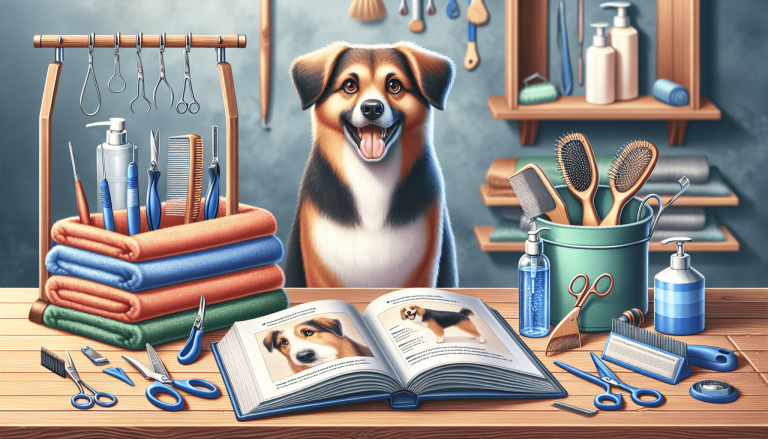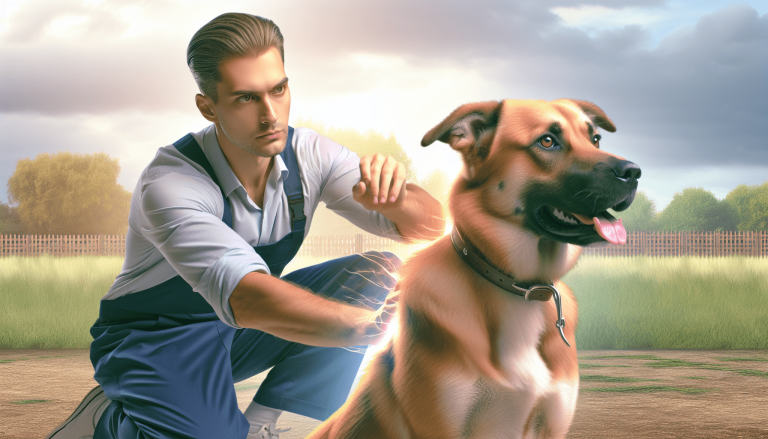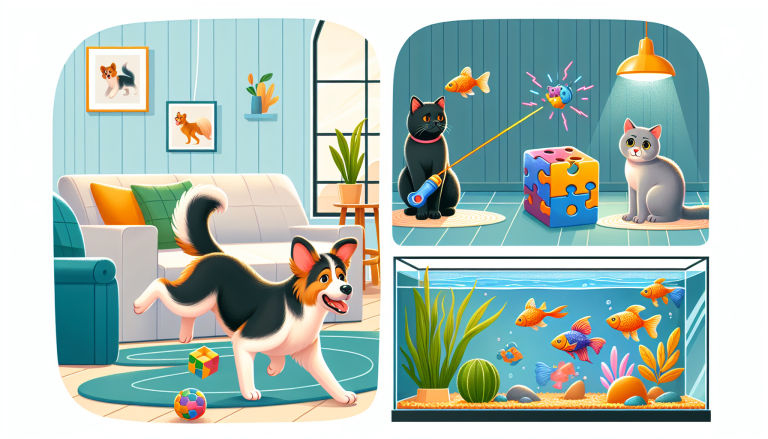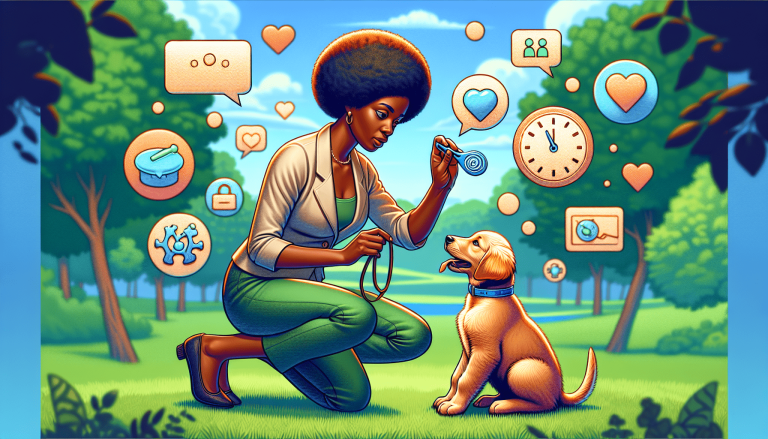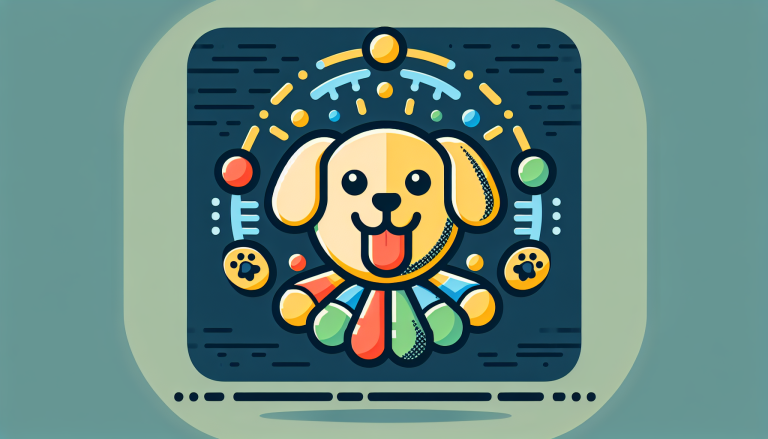Are you looking for ways to ensure your furry friend stays happy and healthy? Look no further! In this article, we will explore the top techniques and strategies to keep your dog’s tail wagging and their health in top-notch condition. From providing a nutritious diet to engaging in regular exercise, we’ve got you covered. Get ready to discover the secrets to a long and fulfilling life for your beloved companion.
Table of Contents
ToggleExercise
Regular walks
Taking your dog for regular walks is an essential part of keeping them happy and healthy. Not only does it provide them with much-needed physical exercise, but it also allows them to explore their surroundings and release pent-up energy. Whether it’s a leisurely stroll around the neighborhood or an adventurous hike in the woods, walks provide mental stimulation and help prevent behavioral problems caused by boredom.
Playtime with toys
Playtime is not just fun for dogs; it also serves a vital role in their overall well-being. Engaging in interactive play with toys helps keep them mentally stimulated and prevents destructive behavior out of boredom. Toys that challenge their problem-solving skills, such as puzzle toys or treat-dispensing toys, are especially beneficial. So make sure to set aside dedicated playtime each day to bond with your furry friend and keep them entertained.
Participation in dog sports
If you’re looking to take your dog’s exercise routine to the next level, consider getting involved in dog sports. Activities like agility, flyball, or obedience training can provide physical and mental stimulation while also strengthening the bond between you and your canine companion. Not only do dog sports offer a great way for your dog to burn off excess energy, but they also provide socialization opportunities and promote a sense of accomplishment.
Proper Nutrition
Balanced diet
A balanced diet is crucial for your dog’s overall health and well-being. Providing them with high-quality commercial dog food or a well-prepared homemade diet ensures they receive all the necessary nutrients they need. A balanced diet consists of a combination of protein, carbohydrates, healthy fats, vitamins, and minerals. Consult with your veterinarian to determine the appropriate diet for your dog, taking into consideration factors such as age, size, breed, and any specific health concerns.
Appropriate portion control
In addition to feeding your dog a balanced diet, it’s essential to ensure they receive the appropriate portion sizes. Overfeeding can lead to obesity, while underfeeding can result in nutritional deficiencies. Each dog’s caloric needs may vary based on their activity level, age, and metabolism. Follow the feeding guidelines provided by the dog food manufacturer or consult with your veterinarian to determine the right portion sizes for your furry friend.
Avoiding harmful foods
Some human foods can be toxic to dogs and should be avoided at all costs. Common items like chocolate, onions, grapes, and avocados can cause serious health problems if ingested by dogs. Additionally, certain artificial sweeteners, like xylitol, can be highly toxic and even fatal. Familiarize yourself with the list of foods that are harmful to dogs and ensure they are kept out of your pet’s reach. When in doubt, consult with your veterinarian for guidance on safe and appropriate dietary choices for your dog.
Regular Veterinary Care
Routine vaccinations
Keeping your dog up to date on their vaccinations is crucial for their health and well-being. Vaccinations protect them from potentially deadly diseases, such as rabies, parvovirus, distemper, and canine hepatitis. Follow your veterinarian’s recommended vaccination schedule to ensure your dog receives the necessary boosters and annual vaccinations. Regular vaccinations not only protect your dog but also contribute to the overall health and safety of the community by preventing the spread of contagious diseases.
Annual check-ups
Just like humans, dogs benefit from annual check-ups with a veterinarian. These regular visits allow your vet to perform a thorough physical examination, monitor your dog’s overall health, and detect any potential issues early on. During the check-up, your vet will assess your dog’s weight, dental health, heart rate, and other vital signs. They may also recommend additional diagnostic tests, such as blood work or fecal examinations, to rule out any underlying health conditions.
Parasite prevention
Parasites like fleas, ticks, and heartworms can pose significant health risks to your dog. Regular preventative measures are essential to protect them against these pesky parasites. Use appropriate flea and tick preventatives as recommended by your veterinarian, and ensure your dog is on a regular heartworm prevention medication. Regularly check your dog’s fur for any signs of fleas or ticks, and consult with your vet if you notice any unusual symptoms or if your dog seems uncomfortable.
Mental Stimulation
Interactive toys
Providing your dog with interactive toys is an excellent way to keep their minds sharp and prevent boredom. Toys that require problem-solving, like puzzle toys or treat-dispensing toys, can provide hours of mental stimulation. These toys engage your dog’s natural instincts and encourage them to work for their reward, keeping them mentally engaged and reducing the risk of destructive behavior caused by boredom. Rotate the toys regularly to maintain their novelty and continually challenge your furry friend.
Training sessions
Engaging in regular training sessions with your dog not only helps teach them essential commands but also provides mental stimulation. Training exercises allow your dog to use their brain, enhance their problem-solving skills, and strengthen the bond between you. Whether it’s basic obedience training or advanced tricks, breaking the sessions into short, focused intervals will keep your dog engaged and motivated. Remember to use positive reinforcement techniques, such as treats and praise, to reward and encourage good behavior.
Enrichment activities
In addition to interactive toys and training sessions, incorporating enrichment activities into your dog’s routine is highly beneficial. Enrichment activities can include anything from hide-and-seek games, scavenger hunts, or even creating an obstacle course in your backyard. These activities provide both physical and mental stimulation, keeping your dog entertained and mentally engaged. Be creative and try new activities regularly to prevent your dog from becoming bored with their routine.
Socialization
Exposure to different environments
Exposing your dog to various environments is essential for their socialization and overall well-being. Introducing them to different sights, sounds, and smells from a young age helps them develop confidence and adaptability. Take your dog for walks in different neighborhoods, visit dog-friendly parks, and expose them to various types of surfaces, such as grass, sand, or concrete. Gradually introduce them to new experiences while ensuring a positive and rewarding environment.
Interaction with other dogs
Allowing your dog to interact with other dogs is crucial for their socialization skills. Positive experiences with other dogs help your furry friend learn proper social behaviors and improve their communication skills. Arrange playdates with other friendly and well-behaved dogs, or consider participating in doggie daycare or group training classes. However, always ensure that the interactions are supervised and take into account your dog’s temperament, size, and comfort level.
Positive experiences with people
In addition to socializing with other dogs, it’s important for your dog to have positive experiences with people. This helps them develop trust, confidence, and friendly behaviors towards humans. Regularly expose your dog to different people, including friends, neighbors, and strangers in controlled environments. Encourage gentle interactions, offer treats and praise for their good behavior, and gradually expose them to various situations and experiences.
Grooming and Hygiene
Regular brushing
Regular brushing is essential for maintaining your dog’s coat health and overall cleanliness. Different dog breeds have different grooming needs, so consult with your veterinarian or a professional groomer to determine the appropriate grooming routine for your dog. Brushing helps remove loose hair, prevents matting, and stimulates the skin. It also provides an opportunity for you to bond with your dog and monitor their skin, coat, and overall health.
Bathing when necessary
While regular brushing helps keep your dog’s coat clean, occasional baths are necessary to keep them smelling fresh and remove any dirt or debris. The frequency of bathing depends on your dog’s breed and activity level, as well as any underlying skin conditions. Use a dog-specific shampoo and ensure the water temperature is comfortable for your dog. Be gentle during the bathing process, and make sure to thoroughly rinse off all the shampoo to prevent skin irritation.
Nail trims and dental care
Trimming your dog’s nails is an essential part of their grooming routine. Long nails can cause discomfort and be prone to splitting or breaking. Use proper nail clippers designed for dogs, and be cautious not to cut too close to the quick (the sensitive part of the nail). If you’re unsure about how to trim your dog’s nails, consult with a professional groomer or veterinarian.
Dental care is equally important for your dog’s overall health. Regularly brushing their teeth with dog-specific toothpaste and providing dental treats or toys can help reduce the risk of dental diseases and maintain fresh breath. In addition to at-home care, consider scheduling professional dental cleanings with your veterinarian to ensure your dog’s teeth and gums are in optimum condition.
Safe and Comfortable Environment
Providing a cozy bed
Providing your dog with a comfortable and cozy bed is essential for their overall well-being. Dogs need a designated space where they can relax, unwind, and feel secure. Choose a bed that is appropriate for your dog’s size and breed, and place it in a quiet and comfortable area of your home. Ensure the bed is soft and supportive, and regularly clean it to maintain cleanliness and hygiene.
Temperature control
Just like humans, dogs are sensitive to extreme temperatures. Ensure your dog’s environment is kept at a comfortable temperature year-round. During hot summer months, provide access to shade and fresh water to prevent overheating. In cold winter months, provide warm bedding and consider using sweaters or jackets for dogs with shorter coats. Monitor your dog’s behavior and adjust the temperature accordingly to ensure their comfort and safety.
Securing hazardous areas
Creating a safe environment for your dog is crucial in preventing accidents and injuries. Identify any hazardous areas in your home or yard and take the necessary precautions to secure them. Use pet gates or barriers to prevent access to areas such as staircases, pools, or toxic plants. Keep household chemicals, medications, and other potentially harmful substances out of your dog’s reach. Regularly inspect your home and yard for any potential hazards and address them promptly to ensure your dog’s safety.
Avoiding Stress
Establishing routines
Dogs thrive on routine and predictability. Establishing a consistent daily routine can help reduce stress and anxiety in your furry friend. Set regular times for meals, walks, playtime, and rest. Dogs feel more secure when they know what to expect, so try to stick to the established routine as much as possible. Consistency and structure provide a sense of stability for your dog and contribute to their overall well-being.
Using calming techniques
If your dog is prone to stress or anxiety, using calming techniques can help alleviate their symptoms. Calming techniques can include things like gentle massage, aromatherapy with safe essential oils, or playing soothing music. Some dogs may benefit from the use of anxiety wraps or pheromone diffusers, which can create a calming effect. Consult with your veterinarian for recommended techniques or products that may help your dog relax.
Minimizing exposure to loud noises
Loud noises, such as fireworks or thunderstorms, can be extremely stressful for dogs. Take measures to minimize their exposure to these noises by creating a safe and quiet space for them during events that may trigger anxiety. Close windows and doors, play white noise or soft music to mask the noise, and provide a cozy hiding place for your dog to retreat to if they feel scared. If your dog’s anxiety persists, consult with your veterinarian for additional guidance and potential medication options.
Quality Time and Attention
Daily interaction
Spending quality time with your dog on a daily basis is essential for their happiness and well-being. Dogs are social animals and crave human interaction and attention. Whether it’s going for walks, playing games, or simply snuggling on the couch, make an effort to dedicate time each day to bond with your furry friend. Quality time spent together strengthens your bond and enhances your dog’s emotional and mental well-being.
Bonding activities
In addition to regular interaction, engaging in bonding activities can further strengthen the bond between you and your dog. Activities such as obedience training, agility classes, or even participating in therapy dog programs can provide shared experiences and a sense of accomplishment. These activities not only provide mental and physical stimulation but also deepen the connection and trust between you and your dog.
Positive reinforcement
Using positive reinforcement techniques helps to reinforce good behavior and encourages your dog to continue engaging in desirable behaviors. Reward your dog with treats, praise, or petting when they exhibit good behavior or perform commands correctly. Positive reinforcement creates a positive association with desired actions, making your dog more likely to repeat them in the future. Avoid using punishment-based training methods, as they can create fear and stress in your dog.
Maintaining a Loving Relationship
Showing affection
One of the simplest yet most effective ways to maintain a loving relationship with your dog is by showing them affection. Dogs thrive on physical touch, so make sure to offer regular gentle pats, belly rubs, and ear scratches. Verbal affirmations in a warm and loving tone also go a long way in making your dog feel loved and appreciated. The more love and affection you give your dog, the stronger your bond will become.
Understanding your dog’s needs
Each dog is unique, and it’s essential to understand and cater to their individual needs. Pay attention to your dog’s body language, vocalizations, and behavior to determine how they’re feeling and what they may need. Dogs communicate through subtle cues, so being attuned to their signals allows you to provide the appropriate care, attention, and comfort they require. Understanding and meeting your dog’s needs will help them feel secure, loved, and content.
Respecting boundaries
While showing love and affection is important, it’s equally important to respect your dog’s boundaries. Not all dogs enjoy certain types of physical contact or attention. Some may prefer their personal space or have specific triggers that cause them discomfort. Pay attention to your dog’s reactions and behavior cues to determine their comfort levels. If your dog shows signs of stress or anxiety, give them space and find alternative ways to bond that respect their boundaries. Respecting your dog’s boundaries fosters trust and ensures a loving and respectful relationship.
In conclusion, keeping your dog happy and healthy requires a combination of various factors. Regular exercise, proper nutrition, veterinary care, mental stimulation, socialization, grooming, a safe environment, stress management, quality time and attention, and a loving relationship all contribute to your dog’s overall well-being. By prioritizing these aspects and integrating them into your dog’s daily life, you can ensure that they lead a fulfilling, happy, and healthy life by your side. Remember, your furry friend depends on you for their physical and emotional needs, so make their health and happiness a top priority.
